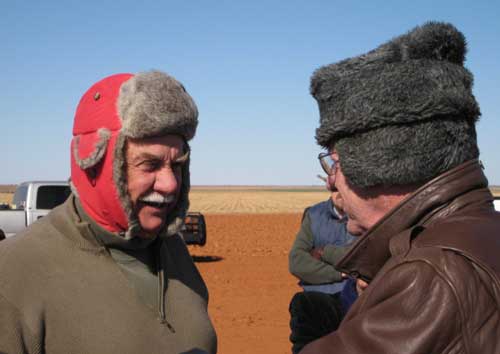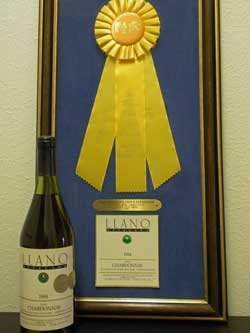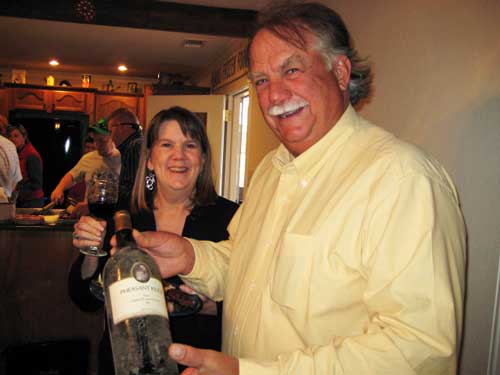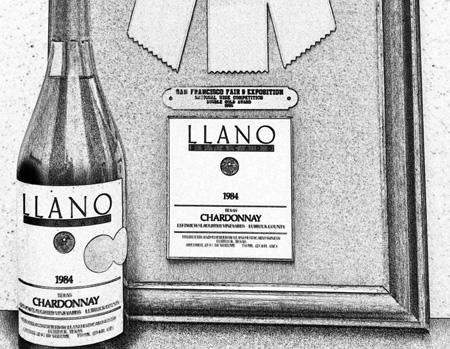
2013 Late Spring Frosts Texas: But, Winegrowers Live and Learn
“Hi there Bobby, How y’all doing up there?”
That’s how I started my conversation with Texas high plains viticultural consultant Bobby Cox this week. I already knew that Texas winegrowers were having a time of it with the “cold flashes” since mid-March.
Bobby said, “Well, where I’m sitting this morning, I’m looking at my iPad and its 32 degrees in Brownfield and wondering how much lower its going to go around here. We’ve been fighting it hard this spring. This year has already brought back memories of 1994. That was the year of the ‘double whammy’.”
What Bobby was referring to was the shock of two freezes that came in two episodes after the vines started to bud out. For grape growers and their vines, it was like double barreled shot gun blasts that left many vines wilted along with their tenders.
I asked Bobby for a comparison between this year’s spring freezes and those in 1994.
He said, “This year, we’ve already had the double whammy. We had double freeze events about 10 days apart; one at the end of March and the second in early April. And, if it freezes again tomorrow it will be a ‘triple whammy’. But, you know, I think that the growers in Texas are in much better shape in 2013 than they were after the late freezes of 1994.”
Here’s the deal, the way I understand it from Bobby’s description.
After Texas’s Llano Estacado Winery won a gold medal in California way back in 1984 for their Chardonnay, lots of people planted all around Texas said, “Let’s plant Chardonnay”. By 1994, about 30 percent of the acreage of Texas grapes was Chardonnay – the darling grape of the Burgundy region of France and California’s Napa Valley, and apparently with lots of starry-eyed Texans, back then.

Bobby said, “Chardonnay just doesn’t handle the kind of weather we have in Texas at all. First, it wakes up far too early in the spring and starts to push buds and send out shoots. Well, it’s primary buds get frosted and its secondary buds are just not fruitful.”
Well, according to Bobby, there is not much Chardonnay planted in Texas anymore and for good reason…it just doesn’t do well here. It’s working itself out of Texas vineyards as people learn. Texas winegrowers are starting doing a better job now of what he calls “varietal selection”. That is, choosing grape varieties that start to bud later and “site selection” that basically means, don’t plant in low lying locations where the coldest air tends to hang out.
Bobby said, “The good news this year is that so far, anyway, Marsanne and Roussanne appear to have full crop potential in most vineyards, as do Trebbiano, Picpoul Blanc and Malvasia Bianca.”
I commented, “They’re not exactly household names!”
He responded, “This year’s results will add emphasis to the switch from the more common California varieties, because in general, these grape have the characteristics we need in Texas to handle the weather.”
Bobby admitted that this year’s spring freezes have been very hard on Viognier, a grape that’s had great acclaim in Texas and made some well-awarded wines.
Bobby said, “I originally planted Viognier at Cliff Bingham’s place as they were organic at the time. I knew that Viognier could handle the heat, it budded a bit early for Texas, but it is very disease resistant and does not rot. So, I figured that we could manage the frost situation. But, keep in mind that what we’ve seen with this year’s frosts, it’s been about 20 years since we’ve had spring freeze events like this. It’s not the normal situation.”
According to Bobby, some red grapevines got hurt in the freeze that occurred April 18-19 even though this is generally less of a problem since they tend to bud out later than white grape vines. He included Tempranillo in the damage, but from prior experience in Texas, Tempranillo can manage a decent crop on its secondary buds. Generally, better sited vineyards (those not planted in low spots) did substantially better than others.
One final note from Bobby was that growers are working to fight spring frost with a new version of very old vineyard technology – application of a Copper-based fungicide (copper was used on grapevines in Europe since the 1840s). But, the new twist is that it also works against ice-nucleating bacteria that reside on the vines, and the application of the fungicide depresses the freeze temperature on the vines down to about 28 F. It’s an approach used on strawberries produced in colder regions.
Bobby reflected a moment on this growing season’s hard start. Then, with the positive attitude required for anyone that considers themselves a serious farmer and especially if they are dead-set on breaking new ground in Texas winegrowing, Bobby said, “This is a year that separated the men from the boys on vineyard techniques and varietal selection. Live and learn that’s what I say!”



